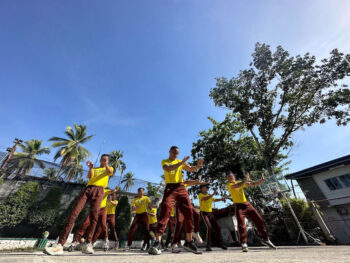DAVAO CITY (MindaNews / 17 April) – The Mindanao power situation is again placed on the spot after the Easter Sunday blackout, the third in the last two years, two of them last year.
The biggest blackout was on February 27 last year when one plant of the Misamis Oriental-based Steag State Power Inc. gradually lost power and eventually collapsed. This led to the collapse of the whole grid.
But that problem could have been avoided had the National Grid Corp. of the Philippines (NGCP) been able to plug the capacity equivalent to the capacity of the plant which is 105 megawatts.
In an ideal situation, the grid operator, in this case the NGCP, needs to have a reserve plant whose capacity is equivalent to the capacity of the biggest plant. However, when the blackout took place, the NGCP reasoned that under the Grid Code of the Philippines, it is only required to have a reserve equivalent to four percent of the grid requirement.
But what aggravated the problem was that even the power plant that the NGCP tapped as its source for reserve was experiencing a problem. In short, it was a problem waiting to happen.
The sad thing to all of these blackouts is that the national government has remained indifferent to Mindanao. Of course, top government officials have to pretend that they sympathize with the people of Mindanao, but if one looks at it, they have not done anything to at least prevent another similar event from occurring.
Had it happened in Manila, the national government would have moved heaven and earth in finding ways to solve the problem. Right now they have been doing everything just so Congress could give President Aquino III emergency powers so it could arrest an impending power problem.
Does the President really need emergency powers to address the problem in imperial Metro Manila? For one, there was no emergency powers to talk about when Davao City addressed the power crisis in 2010. What it did, through its distributing utility Davao Light and Power Co., was just to inform those with generating sets to run their sets and that their expenses for doing so would be offset through the interruptible load program.
Of course, Mindanao is not Metro Manila. It will remain as a second class island in the eyes of the national government. What worsens the situation is that even officials from Mindanao, be they in any of the key branches of government, seem to care less.
Another thing is that Mindanao lawmakers, for example, seem engrossed on issues that they think will increase their political stock, never mind if their constituents will continue experiencing blackouts. Had they initiated changes in the laws on power, Mindanao will not be in another miserable situation.
Mindanao must do something so that it would be able to stand on its own. Unless it can so, it will continue to be in a hapless situation. (Next: How prepared is the NGCP?)
(MindaViews is the opinion section of MindaNews. Carmelito Q. Francisco is managing editor of the Davao City-based Mindanao Times.)







